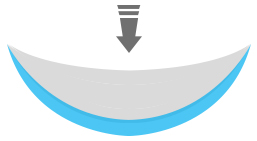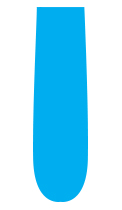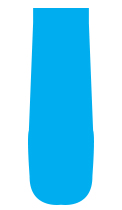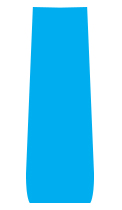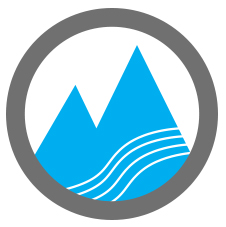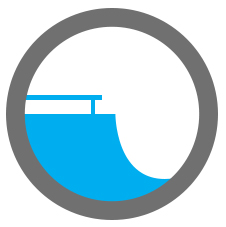
Be confident in the skis you purchase
At Corbetts, we pride ourselves on carrying a wide arsenal of skis for all ski levels and styles. If you’re feeling a little overwhelmed about what ski will best suit you, you’re in the right place. We’ll break down what to look out for so you can narrow your search down using our filters.
Only need info on a specific topic? Jump down to what you're looking for:
01. Gender
02. Ability Level
03. Ski Length (Sizing Chart)
04. Style & Feel
-Waist Width
-Flex
-Profile (Shape, Rocker & Turning Radius)
05. Terrain & Use
![]()
MEN'S
Corbetts carries a variety of Men’s skis, no matter your skill level or your preferred style of ski.
WOMEN'S
We recommend that ladies pick women’s specific skis. They are designed to consider height, weight and anatomical shape of a female skier, whether you’re just starting out or an aggressive skier.
KIDS
Junior skis are designed like a beginner ski, they will be softer and more forgiving to help them learn and improve. Boys and Girls skis are generally the same construction but sometimes have different graphics.
Whether you are just starting out or like to ski aggressively, your skill level will be a contributing factor to selecting the right ski. Your ability level will help you choose the appropriate flex, waist width and length of the ski. There are exceptions that may factor in to the right ski, for instance, if you are a heavier skier you might want to jump up an ability level, similarly, if you are on the lighter side, you may want to jump down (see our sizing chart below for more details). This goes for the waist width of the ski as well, as a novice, a narrower waist width is easier to learn on but the terrain you will be skiing on may require a wider waist underfoot.
If you’ve been looking at purchasing a pair of skis, you probably know that height and weight are key determining factors but we like to think of them just as starting points. As you read on, you’ll see how the terrain, your ability level and even just your personal preference might affect the length of ski that will work for you. In general, a ski that is between your chin and the top of your head will be ideal and while we suggest certain lengths based on your height, make sure to check out why you might want to size up or down.
SIZING UP YOUR SKIS:
-If you are an advanced or expert skier, a longer ski will handle speed and aggressiveness better
-If you weigh more than average for your height
-If you’re selecting a twin tip ski
-If you’re selecting a ski with a lot of rocker in the tip.
SIZING DOWN YOUR SKIS:
-If you are still learning, a shorter ski will be easier to handle and control
-If you weigh less than average for your height
-If you like making quick turns and don’t mind compromising speed
There are a number of features that go into the design of a ski and that will help you select a ski for the right terrain or use. We’ll break down some of the major points that will contribute to the way a ski feels and how it performs. We’ll be looking at Waist Widths, Flex and Profiles.
The waist width refers to the width of the ski at its middle point; this is usually narrowest point of the ski. A narrower waist width will be ideal for quick turns and harder snow whereas a wider waist width will provide a larger surface for more floatation, perfect for powder. When you’re checking out ski specs, you’ll often see a measurement made of 3 numbers, like 140/116/130mm referring to the tip/waist/tail measurements.
There are a few things to consider when you’re looking at the Flex rating of a ski such as the skier’s weight, the ability level and the terrain it will be used on. Someone who is more experienced or has more weight on the ski will benefit from a stiffer ski since it will handle the added pressure better but if the ski will be used on powdery terrain, easing up on the flex will provide more floatation.
For the purpose of this guide, when speaking of the profile of a ski, we’re referring to its Shape, Rocker, and Turning Radius. Again, depending on how you intend to use your skis some profiles may be more beneficial than others.
SHAPE
When looking at a ski, the shape usually refers to the tail of the ski. The shape of the tail will determine how a ski exits a turn.
ROCKER
The Rocker profile of a ski is the curvature or arc pattern it has when looking at it from the side.
CAMBER
This is the traditional profile. A cambered ski will arc up at the center of the ski and the contact points will be near the tip and tail of the ski. Since the cambered profile offers the most edge grip, pop, and requires precise turn initiation; this profile is ideal on hard packed snow and is popular with racers and park riders.
ROCKER
Also known as reverse-camber, this resembles a smooth arc from tip to tail. Whether rockered or cambered, a ski will take a rockered profile once weight is applied in a turn. Since no weight is required to achieve this arc in a fully rockered ski, they are ideal to stay afloat soft snow and will be easy to initiate turns with less chance of catching an edge.
ROCKER/CAMBER
Similar to a cambered ski, the rocker/camber combination will typically have the contact point set further back from the tip of the ski while the contact point in the tail remains close to the end of the ski. This early rise in the tip of the ski helps with floatation on powder while the camber gives it more edge grip and stability. You’ll find this profile in most all-mountain skis as it is quite versatile on hard pack and softer snow. However, bear in mind that because of the asymmetric profile, this style is not ideal for the park or riding backwards.
ROCKER/CAMBER/ROCKER
Most closely resembling a cambered ski, the rocker/camber/rocker profile has its contact points closer to the middle of the ski while still not being underfoot. With a great combination of edge hold, float and easy release from turns, this profile is super playful and packs a punch in terms of versatility for park riders, powder lovers and even beginners as it offers enough forgiveness while initiating/releasing turns.
TURNING RADIUS
The turning radius of a ski is determined by the arc it creates when tipped on edge. Typically expressed in meters, the narrower a ski's waist width is in relation to its tip and tail, the shorter the turn will be. A shorter turn radius means quicker turns.
| TURNING RADIUS | TURN TYPE | SKIING STYLE |
|---|---|---|
| <14M | Short Turns | Carving and All-Mountain |
| 14-22M | Medium Turns | All-Mountain, Park & Pipe |
| >22M | Long Turns | Powder and Big Mountain |
Skiing in deep powder? You might want to try a ski with a wider waist and a rockered tip. Terrain and style of ski will factor into the features you’ll want to consider for your next pair of skis, this is what we’ll break down in this section.
• • •
Still have some questions? We've got an extremely knowledgeable and friendly team at Corbetts. Visit us at our retail location or give us a call and we'll help you find the perfect skis to fit your needs.
Need help with more skiing gear? Check out our other Ski Buying & Sizing Guides.












